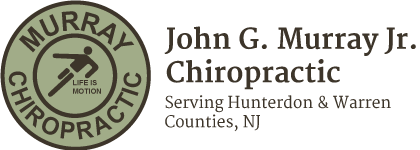The spine, head, and even the pelvis can play a role in the proper function of your temporomandibular joints (TMJ) and therefore your jaw. Dr. Murray explains how these problems are diagnosed and treated with chiropractic care.
I wanted to talk a little about the temporomandibular joint, also known as the TMJ. We each have two TMJ joints, one on either side of the head. It is a combination of two bones – the temporal bone, which serves as the socket, and the mandabal which serves as the ball. It is kind of like your shoulder joint, a ball-and-socket joint. It also has cartilage called the meniscus, similar to what you have you in your knee.
So what does chiropractic have to do with symptoms in the jaw and temporomandibular joint? Well we will first rule out dental issues, but one we have we can look at both the cranial area and the spine. Cranial issues with the temporal bone itself, or the mandabal bone may also be out of alignment. Additionally, the spine also plays a large role with TMJ issues. The upper cervical areas of your spine, as well as upper thoracic can affect the muscle tone into the head and neck and that can affect the balance of tone that actually causes your jaw to function. The buccinator muscles, the muscles of chewing, can also be affected by the nerve supply in the neck and cranial area.
Also something very important to consider, believe it or not, is your pelvis. If you pelvis or lower back is out of balance you can have load bearing issues, and the related compensations the body makes. When you stop moving throughout the day and go to be, those compensatory movements are then translated into the jaw. Reflexively the bone of your pelvis relate to the temporal area, so compensations or a subluxation in the pelvis effecting load bearing will at night be manifested in the clenching of your teeth.
TMJ disorder is a complicated issue that needs to be sorted out and chiropractic looks at the underlying cause both spinally and cranially. If diagnose a cranial issue, it is very easily adjusted with gentle tapping with an instrument we have called an ArthroStim, which works very well. As far as the pelvis goes, there are various gentle techniques we use to bring balance back into that area when it is the underlying cause.
Temporomandibular joints are is complicated and in the exam we will determine the underlying cause, be it dental, cranial, spinal, or pelvic. So that is how we approach it and I hope that helps you understand what is going on with the TMJ and how chiropractic can help.
Browse the most common ailments our patients encounter. Click on each item to learn more.
- Chiropractic Treatment
- Cox Treatment
- Blair Treatment
- Sciatica
- Pinched Nerves
- Frozen Shoulder
- Sinus and Migraine Headaches
- TMJ Disorders
- Arthritis
- Carpal Tunnel
- Numbness
- Pain Management
- Scoliosis
- Sports Injuries
- Work Injuries
